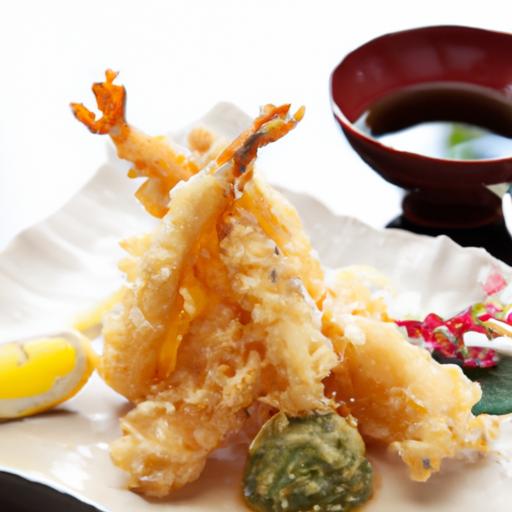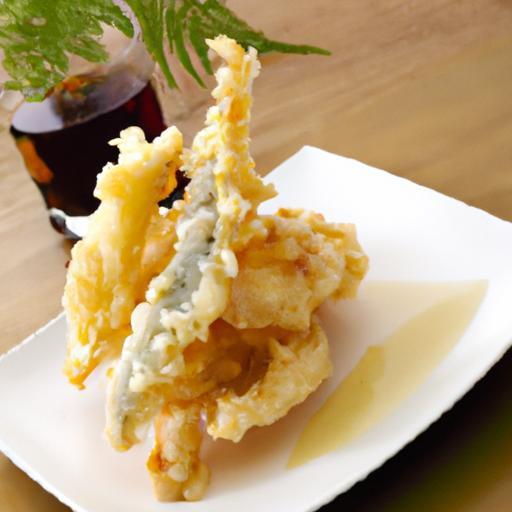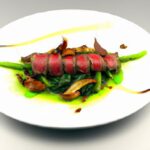Imagine biting into a piece of tempura: the delicate crunch gives way to a tender, flavorful interior, a harmony of textures that feels almost magical. But behind this culinary delight lies a fascinating world of chemistry, where the perfect balance of ingredients and precise control of temperature transform ordinary batter and vegetables into a crispy masterpiece. In “Crisp Science: Unlocking the Chemistry of Perfect Tempura,” we delve into the intricate science that makes tempura uniquely light, airy, and irresistibly crisp, revealing how temperature, ingredients, and chemical reactions combine to create one of Japan’s most beloved dishes. Join us as we unravel the secrets behind tempura’s signature crunch, bridging tradition and science to elevate your next cooking experience.
Crisp Science: Unlocking the Chemistry of Perfect Tempura
Crisp Science: Unlocking the Chemistry of Perfect Tempura begins with an understanding that tempura is not just a dish, but a delicate dance between ingredients and technique. Originating in Japan during the 16th century, tempura’s ethereal crunch and light, airy batter have captivated the world. This recipe post dives deep into how flour and starch interplay, the magic of mastering oil temperature, and the subtle moisture content that influences crispiness to transform your tempura into a culinary masterpiece.
Prep and Cook Time
- Preparation: 15 minutes
- Cooking: 10 minutes
- Total Time: 25 minutes
Yield
Serves 4 as an appetizer or side dish
Difficulty Level
Medium – Perfect for home cooks ready to elevate their frying technique
Ingredients
- 3/4 cup cake flour, sifted
- 1/4 cup cornstarch (for a crispier texture)
- 1 large egg, lightly beaten
- 1 cup ice-cold sparkling water (helps maintain batter lightness)
- Vegetables and seafood of your choice (e.g., sweet potato slices, shrimp, shiitake mushrooms)
- Vegetable oil for deep frying (preferably canola or sunflower oil)
- Salt to taste, for finishing
Instructions
- Prepare the ingredients: Pat vegetables and seafood dry with paper towels to reduce surface moisture. Excess water hinders crispiness.
- Mix the batter: In a chilled bowl, combine the sifted cake flour and cornstarch. Add the beaten egg, then slowly pour in the ice-cold sparkling water. Stir lightly with chopsticks or a fork – lumps are welcome! Overmixing develops gluten, making the batter tough.
- Heat the oil: Using a deep-fryer or heavy pot, heat oil to a steady 350°F (175°C). Maintain this temperature; use a thermometer for accuracy. Too hot causes burning, too cool leads to oily tempura.
- Coat and fry: Dip prepared ingredients into the batter, allowing excess to drip away. Carefully lower into hot oil in batches, avoiding overcrowding. Fry until pale golden and crisp, about 2-3 minutes depending on thickness. Stir gently if tempura sticks together.
- Drain and cool: Remove with a slotted spoon and place on a wire rack over paper towels to drain excess oil. Let cool slightly before serving – cooling enhances the crunch by allowing steam to escape without sogginess.
Tips for Success
- Start with ice-cold sparkling water: The carbonation creates tiny bubbles in the batter, improving lightness and crispiness.
- Use cake flour and cornstarch combo: Cake flour’s lower protein content ensures minimal gluten development, while cornstarch adds extra crunch.
- Maintain oil temperature: A kitchen thermometer is your best friend – steady heat ensures perfect crispness without grease absorption.
- Don’t overmix batter: It’s okay if it looks lumpy; overworking makes the batter chewy.
- Dry ingredients thoroughly: Excess moisture will create steam pockets in the oil, weakening the texture.
- Rest tempura briefly on a wire rack: Avoid stacking on paper towels alone, which traps steam and softens the crust.
Serving Suggestions
Present your tempura with a small bowl of tentsuyu dipping sauce made of dashi, soy sauce, and mirin. Garnish with finely grated daikon and a wedge of lemon for freshness. Serve alongside Japanese steamed rice or a crisp cucumber salad for balance. For a refined touch, sprinkle flaky sea salt directly on just-fried tempura to accentuate its delicate flavors.

| Nutrient | Per Serving |
|---|---|
| Calories | 220 kcal |
| Protein | 8 g |
| Carbohydrates | 18 g |
| Fat | 12 g |
For more insights on mastering frying techniques, check our Ultimate Guide to Frying. To deepen your scientific understanding, explore this detailed explanation by the Journal of Food Science.
Q&A
Q&A: Crisp Science – Unlocking the Chemistry of Perfect Tempura
Q1: What makes tempura so irresistibly crispy?
A: The secret lies in the chemistry of its batter and frying technique. Tempura batter is a delicate balance of cold water, light flour, and sometimes egg, which creates a thin, airy crust. The key is minimal gluten development and very cold batter-this combination prevents heaviness and allows steam to puff up the coating, crafting that iconic crispiness.
Q2: Why is temperature control crucial when frying tempura?
A: Frying tempura at the right temperature-typically around 170-180°C (340-355°F)-is essential. Too hot, and the batter burns before the inside cooks; too cool, and it soaks up excess oil, becoming greasy and soggy. This precise heat allows for rapid water evaporation, forming a light, crispy shell without overcooking the seafood or vegetables inside.
Q3: How does the choice of flour impact the texture?
A: Tempura uses low-protein flours such as cake flour or even rice flour, which have less gluten potential. This softness keeps the coating tender and crispy rather than chewy. High-gluten flours would develop a denser structure, ruining the delicate crunch tempura is famous for.
Q4: Can we tweak the batter to make it healthier without losing crispness?
A: Absolutely! Substituting part of the flour with cornstarch or using sparkling water can lighten the batter further. Also, frying in oils with high smoke points like canola or rice bran oil ensures less oil degradation, making your tempura a bit cleaner without sacrificing crunch.
Q5: What role does the starch content play in tempura batter?
A: Starch gelatinizes rapidly when fried, contributing to the crisp texture. The small amount of starch in the batter, especially from rice or cornstarch additions, gels and forms microscopic glassy structures that resist oil absorption, creating that brittle crunch we love.
Q6: How important is the timing between battering and frying?
A: Critical! Tempura batter should be mixed quickly and used immediately, while still icy cold. Prolonged resting activates gluten and causes flour to absorb too much water, leading to dense, greasy coating. Instant frying ensures a light, bubbly batter that crisps up perfectly.
Q7: What science-based tips can home cooks use to master tempura?
A: Keep your batter cold by mixing it over ice, use fresh-fried oil for optimal heat, and fry in small batches to maintain temperature. Use ingredients at similar temperatures-chilled batter and room-temperature fillings-to reduce thermal shock and promote crisping. Finally, drain excess oil on a wire rack rather than paper towels to preserve crispness.
Unlocking the chemistry behind tempura transforms cooking from art to science, ensuring that every bite delivers that sublime crunch and lightness-a symphony of texture perfected through precision and understanding.
In Retrospect
As the delicate batter dances in shimmering oil, the secrets of perfect tempura come to life-where science and artistry converge in a sizzling symphony. By unlocking the chemistry behind those ethereal, crisp layers, we not only master a timeless culinary craft but also deepen our appreciation for the invisible forces that transform simple ingredients into sublime bites. So next time you savor that delicate crunch, remember: every crisp crackle is a celebration of science-tempura perfected, one molecule at a time.


